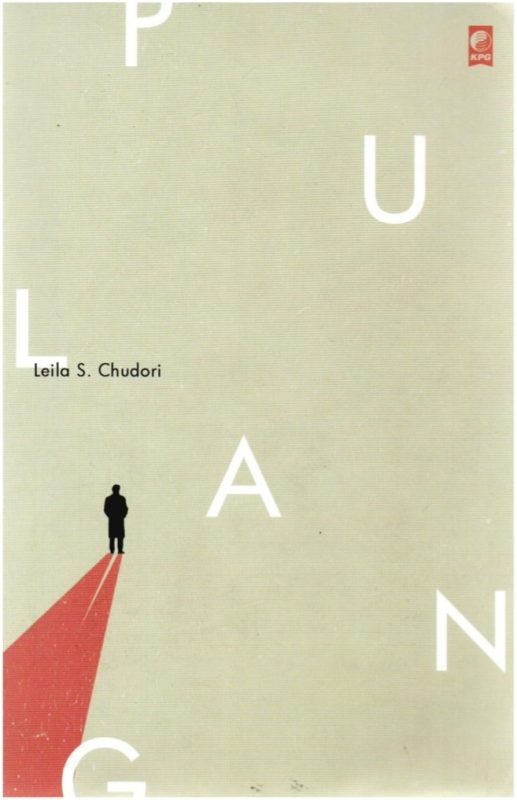Fiction and food are bound physically and culturally.
While the former is seen through how the characters in fiction consume and enjoy food, the latter is visible through the characters’ ways of constructing their cultural identity and life principles by way of food.
Local, traditional, and modern culinary treasures build the image of cultural figures and landscapes in literary works.
In literary and culinary studies, food serves as a means to grow the characters. The local and national identity of characters is marked by their attitude to preserve either local or national fares through cooking, serving, and indulging in the pleasure of food. In urban and metropolitan-themed fiction, for example, various fast foods might represent the characters’ lifestyles as modern and cosmopolitan. In Indonesian fiction, the study of culinary literature is mesmerising, as culinary issues are integrated with themes of fiction such as novels or short stories.
In “Pulang” (literally meaning “going home”), a novel published by KPG in 2012 by Leila S Chudori, for example, the culinary world plays a momentous role because the novel deals with the lives of Indonesia’s political exiles in Europe, especially Paris, which cannot be separated from the traditions of their motherland. Indonesian cuisine is the way they bond with their land of birth and the country where they’re exiled, and revive memories and nostalgia of their hometown. It is widely expressed along with the country’s other cultural arts such as puppets and traditional songs. The exiled character’s love and longing for Indonesia — like Dhimas Suryo in the novel, who married a French woman named Vivienne — is distinct as he is habituated to taking in and cooking typical Indonesian food.
In the context of cultural identity construction, the exiled character seeks to maintain their identity and culinary taste by opening an Indonesian restaurant, Tanah Air, – homeland – in Paris, serving Indonesian specialities such as yellow rice, dry tempeh, yellow fried chicken, spicy sliced potatoes, beef rendang, fern curry, and anam curry. In the midst of European cuisine and western life, the exiled characters described by Chudori are determined to practice Indonesian tradition. The unsparing struggle of the 1965 political exiles in the face of the New Order regime gets heavier in Paris as they must pay more to buy spices such as red chilli, onions, turmeric, ginger, lime leaves, and garlic – it is not easy to get the ingredients.
Chudori shows the negotiated identity thanks to cuisine as a girl of Indonesian-French descent named Lintang, the daughter of Dhimas Suryo and Vivienne, when she said, “Un très bon plate, Ayah!” (“Very yummy, daddy!”) when she enjoyed the Indonesian speciality Dhimas cooked.
Western superiority — which is still inherent among western people by deeming eastern culture as inferior — has been dismantled in this regard. Furthermore, Dhimas shows how he excels at concocting seasoning for Indonesian recipes by prohibiting Vivienne from fiddling with spices.
Indonesia’s identity displayed by the exiled Indonesian character related to spice stuff gives the impression that cultural practices require the knowledge and habits of cultural actors with strong Indonesian roots. It is even narrated that Dhimas used a ulekan (mortar) sent from Indonesia to prepare the seasoning. The culinary representation is so significant overseas that Chudori emphasised in her novel, “Restoran Tanah Air adalah duta kebudayaan di Paris yang sesungguhnya,” (Tanah Air restaurant is a real cultural ambassador in Paris).
If “Pulang” accentuates how cuisine develops the cultural identity of the characters, Damhuri Muhammad’s short story, “Lelaki Ragi dan Perempuan Santan” (literally meaning “boy of yeast and girl of coconut milk”), published in Kompas daily on 29th September 2013, can be used as an example of fiction using culinary treasures as a metaphor that animates the story.
It tells the dynamics of a young couple beautifully metaphorically through a typical West Sumatran food called lemang-tapai (sticky rice cooked in bamboo served with fermented cassava), which needs to be eaten together. The “lemang” philosophy deals with transience, while “tapai” represents immortality. They will complement each other if the two are combined. The young man in this short story chooses to be faithful in waiting for the girl he adores, who always sends him lemang-tapai.
This choice symbolises loyalty and an eternity of love. The young man ignored the potato curry delivery, epitomising other girls’ proposals, as Damhuri asserted in his short story, “Kuah yang kental, kentang yang kempuh sempurna, bagai mencerminkan kesungguhan niat dan ketulusan perasaan keluarga yang hendak beroleh menantu,” (The thick gravy and fully cooked potatoes are like reflecting sincere wishes and pure feelings of a family in want of a son-in-law). Seeking out the very meaning of local cuisine carried out by Damhuri further beefs up the aesthetic aspects of the short story.
The metaphor of a “boy of yeast” and a “girl of coconut milk” reaches its culmination when yeast and coconut milk are associated with a rift in the young couple. The girl left after getting a job, which is still in the culinary field, as a restaurant cashier. She ended up marrying her superior without telling the young man who was faithfully expecting her. Lemang cooked with coconut milk portrays mortality, even betrayal, by the girl.
The yeast, which is a compulsory ingredient for making tapai – the more it is cooked the sweeter it tastes – typifies the identity and loyalty of the young man falling in love with the girl. He has decided to remain single till the end, rendering his mother to reckon that her son is still harbouring feelings of love for the girl. He never gets exasperated that the girl actually makes a run.
The culinary trope in Damhuri’s short story thus has a crucial role, not only in compounding aesthetics and storytelling techniques through food image-themed characterisation but also in moving plots and presenting conflict in the short story. Given its deep-rooted cultural phenomenon, Indonesian food or archipelago flavour has turned out to be a creative source of writing that further aggrandises the identity of Indonesian fiction.




